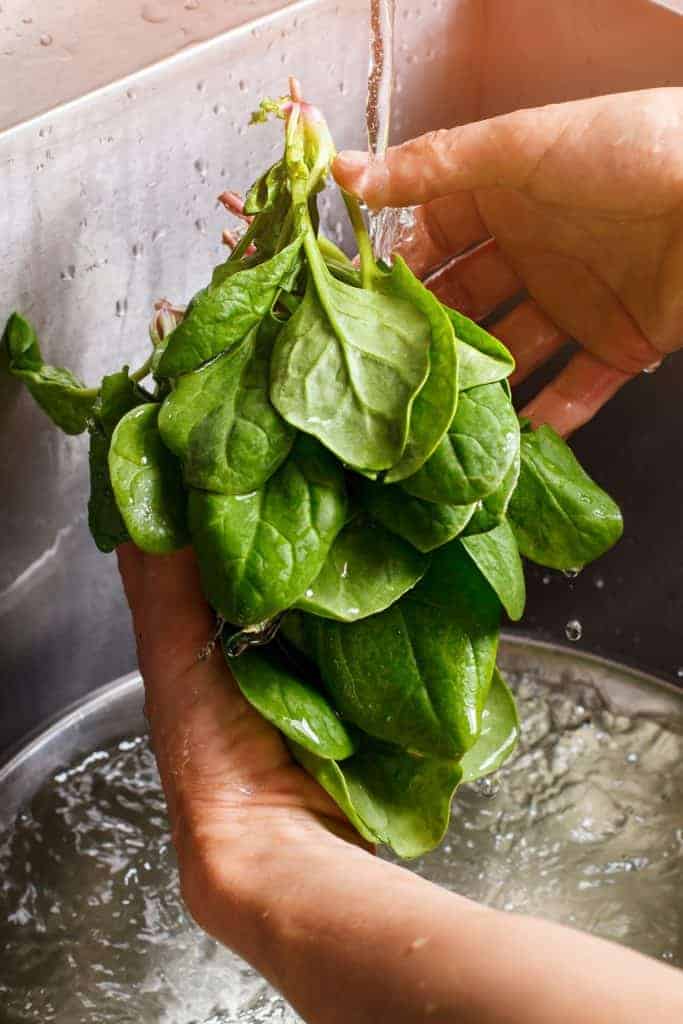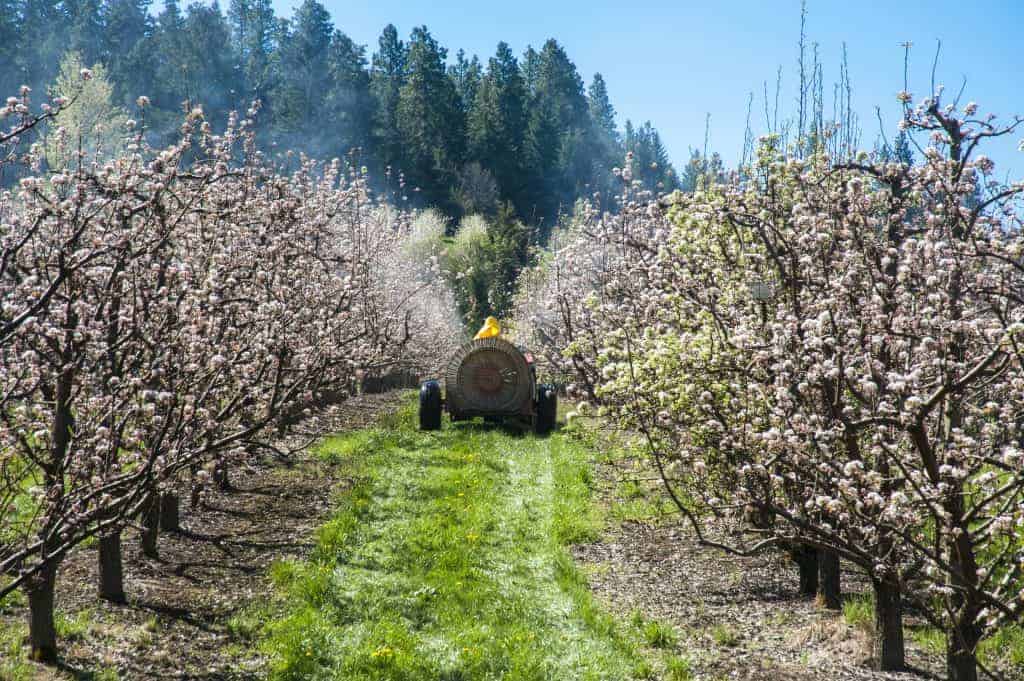We’ve all done it before. We bite into an apple straight from the fruit bowl or eat a grape right out of the bag while cruising the aisles of the grocery store. We don’t think much of doing so and in the majority of cases, you won’t feel the effects of eating produce that hasn’t been rinsed or washed.
But there is always the risk that a strawberry or lettuce leaf could cause a serious illness with some very unpleasant symptoms. It’s scary to think that a salad could harm you but it’s incredibly simple to prevent food-borne illnesses from produce. A quick rinse with a DIY solution can leave your fruits and veggies healthy, tasty, and free of dangerous bacteria and chemical residues.

Washing Gets Rid of More Than Just Dirt
If you’ve been simply rinsing your produce under tap water, you might still be putting yourself at risk. While water might be able to rinse away dirt and some of the buildup found on produce, it won’t rinse away pesticides and bacteria. Imagine if you only washed your body or hair with water. You wouldn’t feel clean and neither does your produce when you give it a quick rinse. Take a look at everything that a thorough washing can remove from your produce.
Dirt and Residue
Dirt isn’t the worst thing you can accidentally eat but washing it off will help your food taste much better. It’s also ideal to rinse away bits of stems or leaves that might have collected in a container or bag.
Germs
Several people have handled your produce before you put it in your shopping basket and you have no way of knowing whether they had recently washed their hands or if they sneezed or coughed on your food.
Mold
Even if you can’t see it yet, mold spores can be found on fruits and vegetables, especially berries. Washing your produce right away keeps you from consuming the spores and can help your produce last longer.
What’s even worse than these items are pesticides, or chemicals used to deter insects from coming into contact with crops, and herbicides which are used to control unwanted plants from taking nutrients from desired crops. It’s virtually impossible to escape these chemicals and their effects on our health can be devastating.
All About Pesticides
Bacteria and germs are everywhere and we all take measures to protect ourselves from them. They’re found on produce too but what’s even more dangerous is pesticide residue. The concept of pesticides seems to make sense. We don’t want insects destroying crops or hitching a free ride into our home on an apple. But pesticides don’t stop there. After they stop the bug, they enter our systems and harm us as well.
According to Nature.com, when you eat a non-organic apple, you are consuming over 30 different pesticides. These pesticides are stored in your colon where they can slowly poison the body.
The risk of pesticides isn’t just limited to our food either. Runoff from the chemicals can end up in rivers and streams, contaminating our water sources and affecting animal life. Pesticides can also travel through our air and end up in locations where they were never used.
Ongoing research featured on the Agricultural Health Study website shows that pesticide use is linked to cancer and kidney failure but the exact risks are still unknown. Certain pesticides seem to have higher occurrences of disease but until scientists are able to pinpoint the exact chemicals with an accurate risk, organic produce is a wise choice.

Organic May Be Healthier but Not Much Cleaner
Don’t make the mistake of thinking that just because you bought organic produce, you can skip the washing. Organic produce is grown without the use of pesticides, synthetic fertilizers, genetically modified organisms, and ionizing radiation but there’s still a chance that they can make you sick.
Dozens of people could have come in contact with your produce before it reached your kitchen so always take the time to wash your fruits and veggies to minimize your risk of contracting a food-borne illness, like your mom suggested.
Produce Friends and Foes
Here’s another tip to help you minimize your risk in addition to the sound washing advice. Have you heard of the Dirty Dozen and Clean Fifteen? They’re lists meant to help consumers become aware of the produce that’s most likely to be contaminated and those that are less contaminated by chemicals. This can help you determine if you should spritz your produce or soak it to eliminate pesticides and bacteria.
Dirty Dozen
Pesticides are sprayed on the outside of a fruit or vegetable but they can penetrate the skin where they linger until you eat the product. No amount of rinsing or cleaning will ever remove all of the pesticides. You’ll want to either purchase these items organic or take the time to soak and cleanse them before consuming.
- Strawberries
- Spinach
- Nectarines
- Apples
- Peaches
- Pears
- Cherries
- Grapes
- Celery
- Tomatoes
- Sweet Bell Peppers
- Potatoes
Clean Fifteen
These fruits and veggies are more likely to be safe to eat conventionally. They are typically not sprayed heavily with chemicals and pesticides. It never hurts to wash them though, even if they are peeled because a peeler can still transfer pesticides to the insides of a fruit or vegetable.
- Sweet Corn
- Avocados
- Pineapples
- Cabbage
- Onions
- Sweet Peas
- Papayas
- Asparagus
- Mangos
- Eggplant
- Honeydew Melon
- Kiwi
- Cantaloupe
- Cauliflower
- Grapefruit
Washing the Right Way
Luckily, it’s not difficult or expensive to whip up a bottle of your own produce spray. All you need is a 16-ounce glass spray bottle and a few simple ingredients to eliminate a large amount of pesticides and bacteria from your produce. Your food will not only taste better but it will be better for you too. Here’s what you’ll need:
16-ounce glass spray bottle
1 ½ cups filtered water
¾ cup organic apple cider vinegar, or white vinegar
1 tbsp. baking soda
10 drops organic lemon essential oil, or the juice of one organic lemon
Mix all ingredients together in your glass bottle and shake to combine. To use, spray the solution as needed on produce. Let it sit for a few minutes and then rinse well under cold water. Let produce dry before consuming or storing.